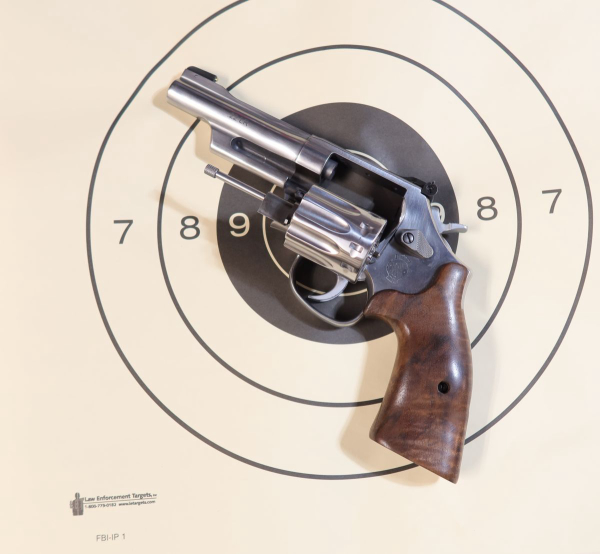
Are you into shooting 22s and like revolvers? If so, there’s one you need to be looking at. The S&W M617 Mountain Gun is a 10-shot, K-frame 36-ounce revolver with a barely-over 4-inch barrel. The “6” in “617” means the gun is fabricated from stainless steel. The 4.1” one-piece barrel has a tapered profile, making it slicker than the underlugged M617 revolver barrel. The factory-supplied stocks are high grade walnut, from Tyler Gun Works, in the “Bear Hug” pattern.
The front sight has a flat-face (not ramped) with a gold bead. The rear sight is adjustable.
Why a “Mountain Gun?” It started as the Mountain Revolver, a skinny-barrel 4” 44 Magnum “back in the day.” It was popular as it was lighter than a four-inch M29/M629 with the untapered barrel. This made it handy for packing back in the timber when you’re afoot.
“Didn’t it kick?”
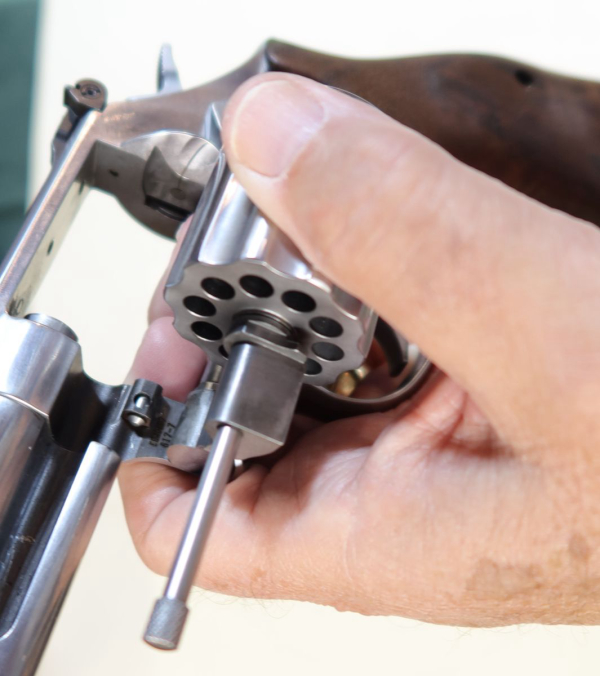
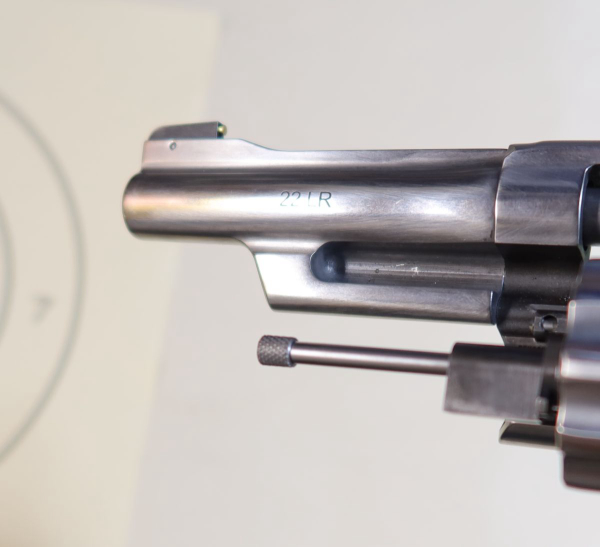
I did mention it was a 44 Magnum, right?
But it was to carry a lot, not to shoot a lot. It was later followed by the Mountain Gun line, starting with 44 Magnum then moving to 45 Colt, 41 Magnum, and 357 Magnum – now all loved by collectors. Sadly discontinued, those that had them (1) weren't getting rid of them and (2) many likely made them safe queens to keep their value.
Enter Lipsey’s. I have little doubt of likely input from the American Fighting Revolver guys as well as some few revolver-oriented media types at a get-together for the Ultimate Carry J-frame event in Louisiana. In whatever way it happened, the new guns have a ball detent (crane) lock, for increased durability. The rimfire Mountain Gun has recessed chambers, putting the case heads below the back of the cylinder.
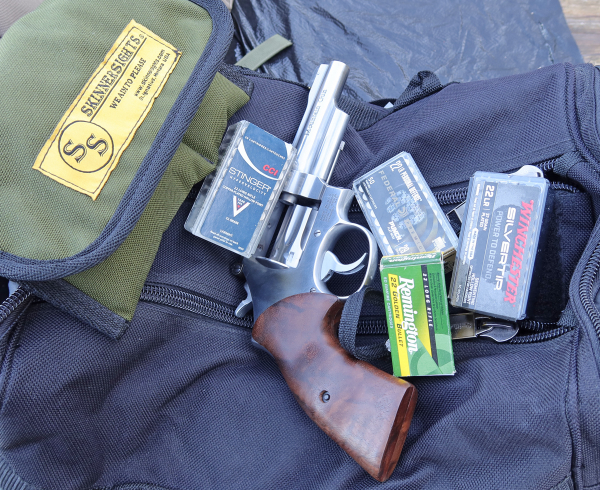
As the cartridges are “rimfire,” the rim holds the priming compound. Being folded allows some (unlikely) potential for a case head to blow out on ignition.
Recessed case heads keep the ash & trash from blowing directly out the sides. It’s a nice touch and I’m not complaining.
On the first trip to the range, I checked zero with Remington Golden Bullet “High Velocity” – the box was unmarked as to bullet weight. It averaged 1001 fps from the 4” barrel of the Mountain Gun. I checked zero on a 3x5” label at fifteen yards and the sights were on for the load, producing a 2 ¼” group, with three hits inside 7/8”.
I proceeded to shoot five rounds right-handed, five rounds left-handed, both strings fired one-handed with no time limits. The target, set at 25 yards, was a B-8 repair center.
The right-hand string yielded a 42/50, 1X with some vertical stringing. The left-hand group, pressed right, scored a 41/50, with a more rounded group. All ten hits were on the paper. 83% isn’t great, but if it were the FBI IP bullseye, the score would be “good enough.”
The front sight bead was a great help in sighting; float the “dot” of the gold bead over the bull and don’t move the gun during ignition. The slick stocks were about ideal in form and function for this game. The gun is solid, positive in function and seemed well-fitted.
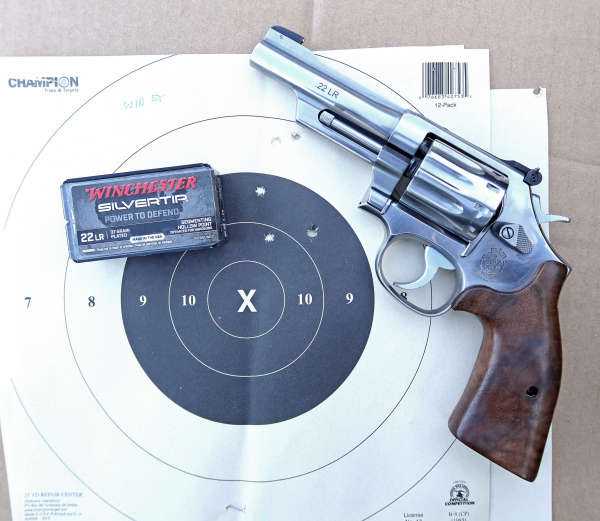
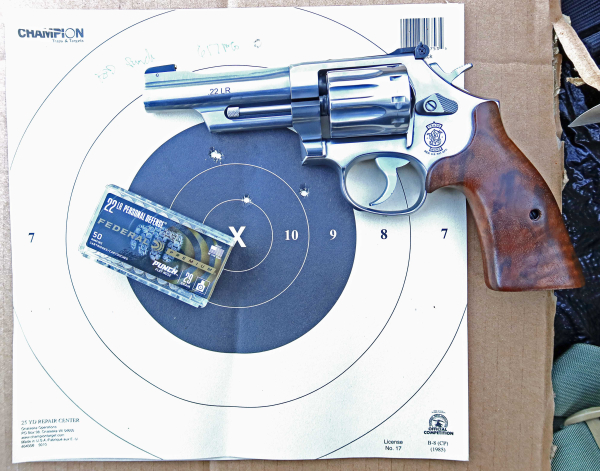
On another trip, I checked current 22 ammo in the 22 Mountain Gun. Shooting at 20 yards from a seated rest, I checked ammo velocities with the Garmin Xero Pro C1. CCI Stinger 32 grain ammo produced 1,098 fps average with five rounds in 3 ½”. The best three hits clustered into 1 ¾”.
Winchester 37gr. SilverTip produced 1,068 fps average and a 2 ¼” group. Three rounds went into 1 3/8”. Federal PUNCH 29 grain was the velocity champ at 1,291 fps average. Five hits went into 3 5/8” with a tragic, shooter-induced flyer. Four of those hits were in 2 ¼”, matching the SilverTip, with the best three shooting into 1 ¼”.
To make those hits, I covered the bullseye with the gold bead of the front sight, very handy.
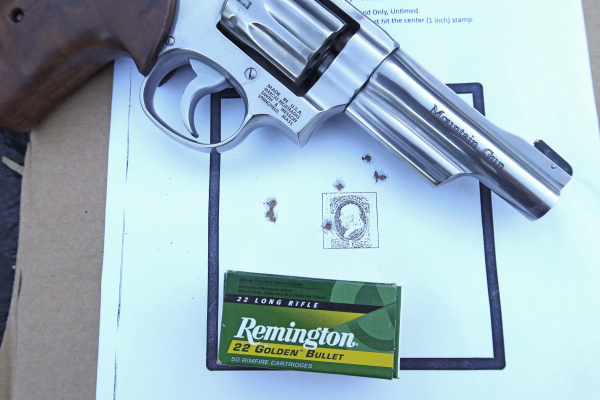
I finished with the Hickok/Frank North “envelope” drill, something I read about from the Tactical Professor (see the link). From 30 feet away, I shot one-handed, bullseye-style, the way the Good Lord intended. The object is to keep six hits inside the five-inch “letter envelope” border, but one of those hits has to land on the 1-inch square “stamp” on the back of the envelope – as the custom allegedly was back in the grand old days.
After I’d fired round #5, I saw that I was “close, no cigar” on that stamp. #6 tagged it, saving me. The effort was shot with Remington Golden Bullet High Velocity ammo.
That made me very happy as I lived up to the gun and the ammo.
— Rich Grassi